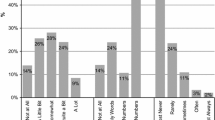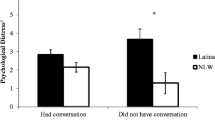Abstract
OBJECTIVE: To identify the communication factors that are significantly associated with appropriate short-term follow-up of abnormal mammograms.
DESIGN: Prospective longitudinal study involving medical record review and patient survey.
SETTING: Ten academically affiliated ambulatory medical practices in the Boston metropolitan area.
PARTICIPANTS: One hundred twenty-six women with abnormal mammograms requiring short-term (6 months) follow-up imaging.
MEASUREMENTS: Proportion of women in the study who received appropriate follow-up care.
RESULTS: Eighty-one (64%) of the women with abnormal mammograms requiring short-term follow-up imaging received the appropriate follow-up care. After adjusting for patients’ age and insurance status, 2 communication factors were found to be independently associated with the delivery of appropriate follow-up care: 1) physicians’ documentation of a follow-up plan in the medical record (adjusted odds ratio, 2.79; 95% confidence interval, 1.11 to 6.98; P=.029); and 2) patients’ understanding of the need for follow-up (adjusted odds ratio, 3.86; 95% confidence interval, 1.50 to 9.96; P=.006). None of the patients’ clinical or psychological characteristics were associated with the delivery of appropriate follow-up care.
CONCLUSIONS: Follow-up care for women with abnormal mammograms requiring short-term follow-up imaging is suboptimal. Documentation of the follow-up plan by the physician and understanding of the follow-up plan by the patient are important factors that are correlated with the receipt of appropriate follow-up care for these women. Interventions designed to improve the quality of result follow-up in the outpatient setting should address these issues in patient-doctor communication.
Similar content being viewed by others
References
Kohn LT, Corrigan JM, Donaldson MS. To Err Is Human: Building a Safer Health System. Washington, DC: National Academy Press; 1999.
Fischer G, Fetters MD, Munro AP, Goldman EB. Adverse events in primary care identified from a risk-management database. J Fam Pract. 1997;45:40–6.
Gandhi TK, Burstin HR, Cook EF, et al. Drug complications in outpatients. J Gen Intern Med. 2000;15:149–54.
Kravitz RL, Rolph JE, Petersen L. Omission-related malpractice claims and the limits of defensive medicine. Med Care Res Rev. 1997;54:456–71.
Risk Management Foundation. Reducing Office Practice Risks. Forum 20(2) 2000.
Leape LL. Error in medicine. J Am Med Assoc. 1994;272:1851–7.
Billings JA, Stoeckle JD. The Clinical Encounter: A Guide to the Medical Interview and Case Presentation. 2nd ed. St. Louis, Mo: Mosby-Year Book; 1999.
Varas X, Leborgne JH, Leborgne F, Mezzera J, Jaumandreu S. Revisiting the mammographic follow-up of BI-RADS category 3 lesions. Am J Roentgenol. 2002;179:691–5.
Lacquement MA, Mitchell D, Hollingsworth AB. Positive predictive value of the Breast Imaging Reporting and Data System. J Am Coll Surg. 1999;189:34–40.
Liberman L, Abramson AF, Squires FB, Glassman JR, Morris EA, Dershaw DD. The breast imaging reporting and data system. Positive predictive value of mammographic features and final assessment categories. Am J Roentgenol. 1998;171:35–40.
Sickles EA. Probably benign breast lesions: when should follow-up be recommended and what is the optimal follow-up protocol? Radiology. 1999;213:11–4.
Smith B. Algorithms for management of common breast complaints. Forum: Risk Manage Foundation. July 1995;1–5.
Committee on Gynecologic Practice. ACOG committee opinion. Follow-up of abnormal screening mammography. Int J Gynaecol Obstet. 2002;78:93.
Sickles EA. Periodic mammographic follow-up of probably benign lesions. Results of 3,184 consecutive cases. Radiology. 1991;179:463–8.
Chang SW, Kerlkiowske K, Napoles-Springer A, Posner SF, Sickles EA, Perez-Stable EJ. Racial differences in timeliness of follow-up after abnormal screening mammography. Cancer. 1996;78:1395–1402.
Bryant H. How should we interpret noncompliance with screening mammography? CMAJ. 1996;154:1353–5.
Porter-Steele N. Breast pain causes noncompliance with mammography and self-examination. CMAJ. 1996;155:632–3.
Kerlikowske K. Timeliness of follow-up after abnormal screening mammography. Breast Cancer Res Treat. 1996;40:52–64.
Strzelczyk JJ, Dignan MB. Disparities in adherence to recommended followup on screening mammogram: interaction of sociodemographic factors. Ethn Dis. 2002;12:77–86.
McCarthy BD, Yood MU, Janz NK, Boohaker EA, Ward RE, Johnson CC. Evaluation of factors potentially associated with inadequate follow-up of mammographic abnormalities. Cancer. 1996;77:5–15.
Murff HJ, Bates DW. Notifying patients of abnormal results. In: Shojania KG, Duncan BW, McDonald KM, Wachter RB, Markowitz AJ, eds. Evidence Report/Technology Assessment Number 43. Making Health Care Safer: A Critical Analysis of Patient Safety Practices. July 20, 2001. Available at: http://www.ahrg.gov/clinic/ptsafety. Accessed March 9, 2004.
Haas JS, Cook EF, Puopolo AL, Burstin HR, Brennan TA. Differences in the quality of care for women with an abnormal mammogram or breast complaint. J Gen Intern Med. 2000;15:321–8.
Solomon CG, Goel PK, Larsen PR, Tanasijevic M, Bates DW. Thyroid function testing in an ambulatory setting: identifying suboptimal patterns of use. J Gen Intern Med. 1996;11(suppl):88.
Burstin HR, Cook EF, Puopolo AL, Brennan TA. Follow-up of test results in primary care: an opportunity to reduce errors. J Gen Intern Med. 1998;13(suppl).
Marcus AC, Kaplan CP, Crane LA, et al. Reducing loss-to-follow-up among women with abnormal Pap smears. Results from a randomized trial testing an intensive follow-up protocol and economic incentives. Med Care. 1998;36:397–410.
Meza JP, Webster DS. Patient preferences for laboratory test results notification. Am J Manag Care. 2000;6:1297–300.
Murff HJ, Gandhi TK, Karson AK, et al. Primary care physician attitudes concerning follow-up of abnormal test results and ambulatory decision support systems. Int J Med Inf. 2003;71:137–49.
Agency for Health Care Research and Quality. 20 Tips to Help Prevent Medical Errors. Patient Fact Sheet. AHRQ Publication No. 00-PO38. Rockville, Md; 2000.
Davidoff F. Time. Ann Intern Med. 1997;127:483–5.
Anonymous. Health Literacy. Report of the Council on Scientific Affairs. JAMA. 1999;281:552–7.
Doak CC, Doak LG, Root JH. Teaching Patients with Low Literacy Skills. 2nd ed. Baltimove, Md: Lippincott Williams & Wilkins; 1996.
Mayeaux EJ Jr, Murphy PW, Arnold C, et al. Improving patient education for patients with low literacy skills. Am Fam Physician. 1996;53:205–11.
Leape LL. Promoting patient safety by preventing medical error. J Am Med Assoc. 1998;280:1444–7.
Reason J. Organizational Accidents: The Management of Human and Organizational Factors in Hazardous Technologies. Cambridge, England: Cambridge University Press; 1997.
Priyanath A, Feinglass J, Dolan NC, Haviley C, Venta LA. Patient satisfaction with the communication of mammographic results before and after the Mammography Quality Standards Reauthorization Act of 1998. Am J Roentgenol. 2002;178:451–6.
Author information
Authors and Affiliations
Corresponding author
Additional information
This power calculation assumes 1) a 34 to 66 distribution in the risk factor of interest, and 2) the group without the risk factor had a 0.4 probability for receiving adequate follow-up and the group with the risk factor had a 0.6 probability of receiving adequate follow-up.
Rights and permissions
About this article
Cite this article
Poon, E.G., Haas, J.S., Puopolo, A.L. et al. Communication factors in the follow-up of abnormal mammograms. J GEN INTERN MED 19, 316–323 (2004). https://doi.org/10.1111/j.1525-1497.2004.30357.x
Issue Date:
DOI: https://doi.org/10.1111/j.1525-1497.2004.30357.x




